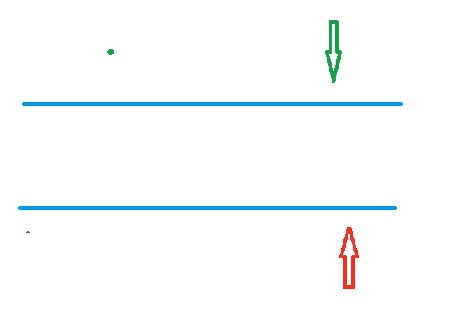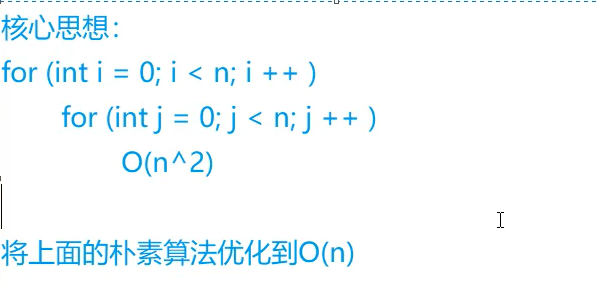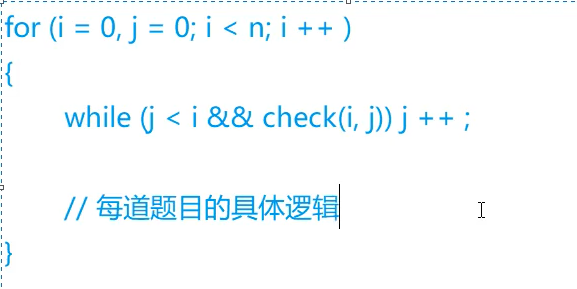双指针算法
基本思想
双指针算法的类型
双指针指向两个序列-类似于归并排序

双指针指向同一个序列-类似于快排

核心思想

算法模板
双指针算法的通用模板

示例运用
示例题目一
输出用空格隔开的每个单词,输出的每个单词占单独的一行。
1
2
3
4
5
6
7
8
9
10
11
12
13
14
15
16
17
18
19
20
21
22
23
24
|
#include <iostream>
#include <string.h>
using namespace std;
int main()
{
char str[1000];
gets(str);
int n = strlen(str);
for (int i = 0; i < n; i++)
{
int j = i;
while (j < n && str[j] != ' ') j++; // i指向单词的开头,j指向单词的结尾
// 这道问题的具体逻辑
for(int k = i; k < j; k++) printf("%c",str[k]);
printf("\n");
i = j;
}
system("pause");
return 0;
}
|
示例题二
给定一个长度为 n 的整数序列,请找出最长的不包含重复的数的连续区间,输出它的长度。
输入格式
第一行包含整数 n。
第二行包含 n 个整数(均在 0∼10e5范围内),表示整数序列。
输出格式
共一行,包含一个整数,表示最长的不包含重复的数的连续区间的长度。
数据范围
1≤n≤10e5
输入样例:
输出样例:
算法的思考过程-从朴素到优美

1
2
3
4
5
6
7
8
9
10
11
12
13
14
15
16
17
18
19
20
21
22
23
24
25
26
27
28
29
30
|
#include <iostream>
#include <string.h>
using namespace std;
const int N = 100010;
int n;
int a[N], s[N];
int main()
{
cin >> n;
for (int i = 0; i < n; i++) cin >> a[i];
int res = 0;
for (int i = 0, j = 0; i < n; i++)
{
s[a[i]]++;
while (s[a[i]] > 1)
{
s[a[j]]--;
j++;
}
res = max(res, i - j + 1);
}
cout << res << endl;
system("pause");
return 0;
}
|
算法没理解可以用手动模拟一下!





